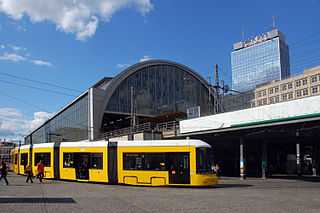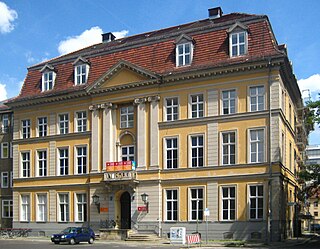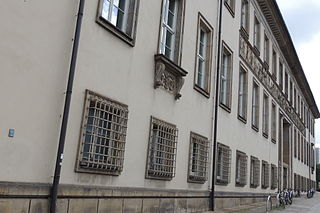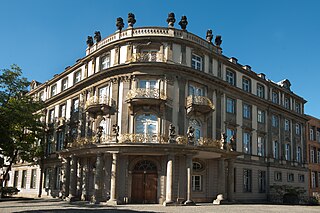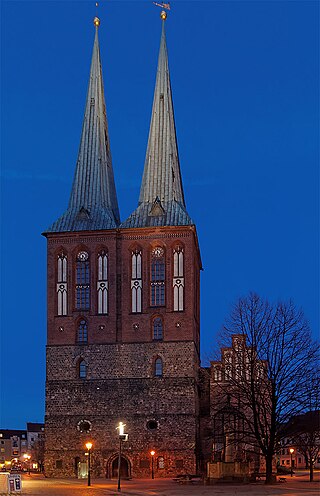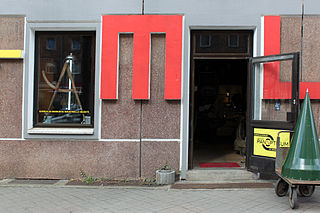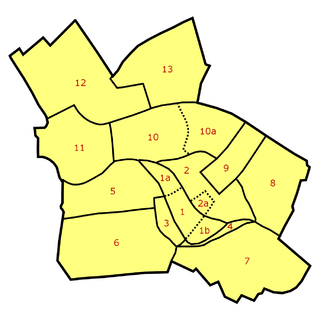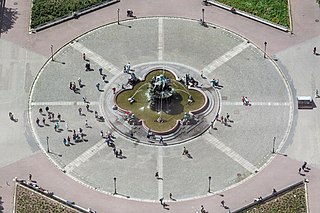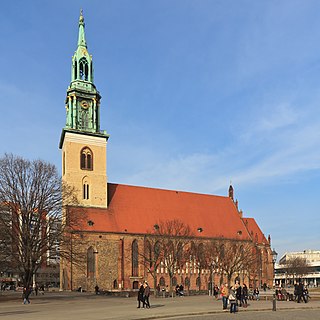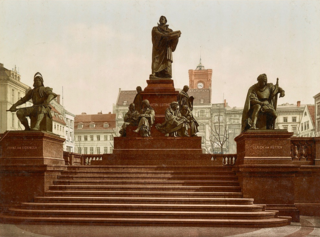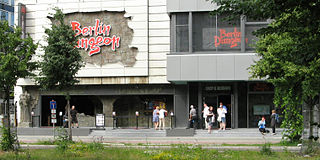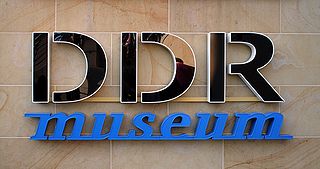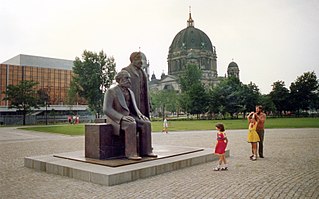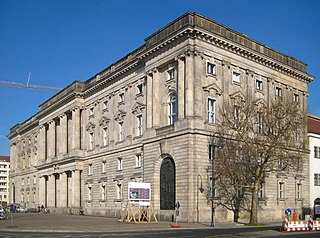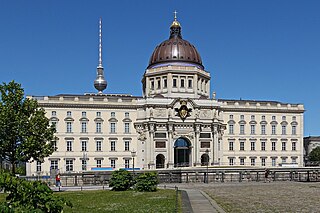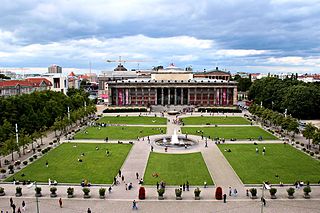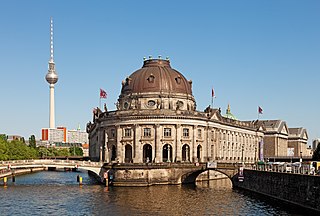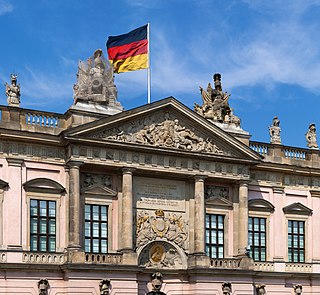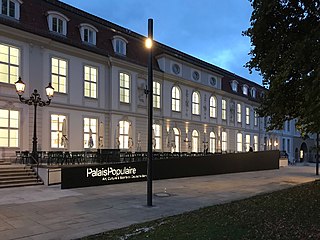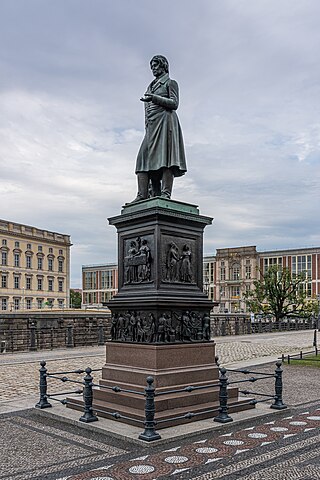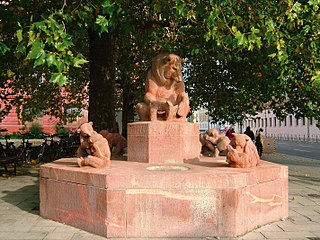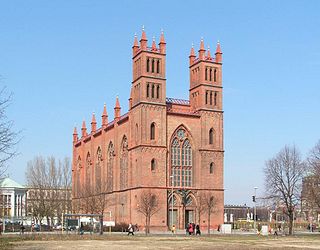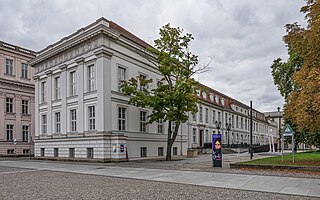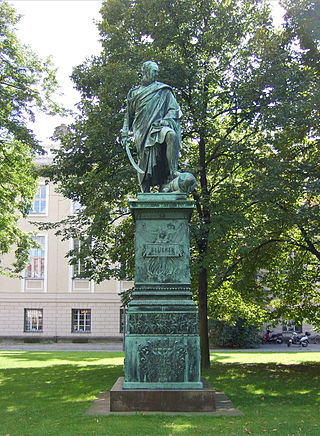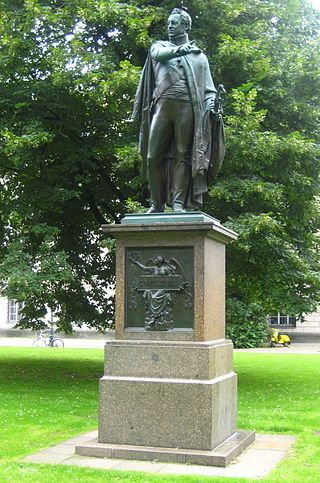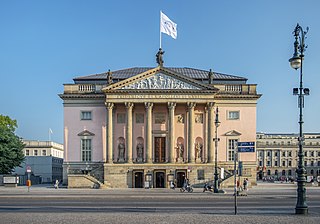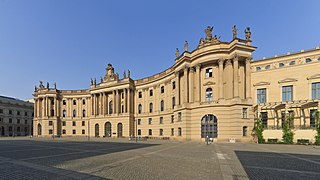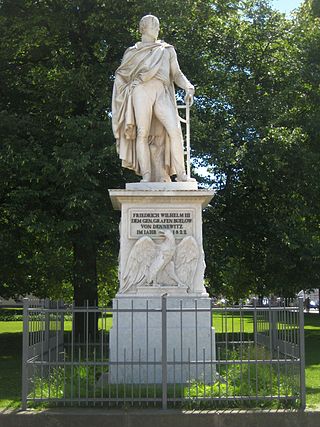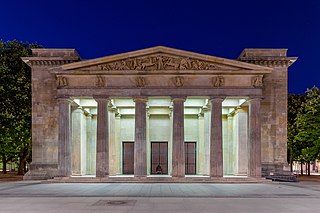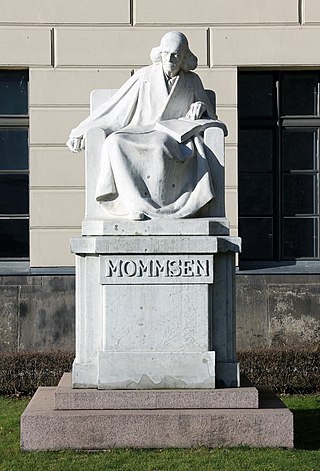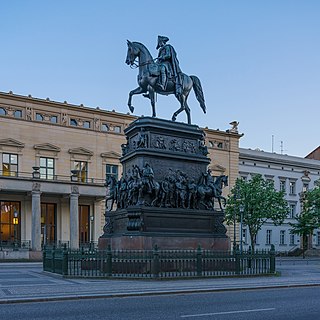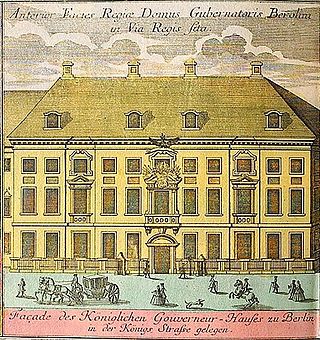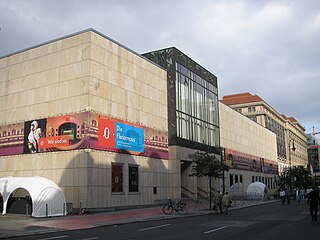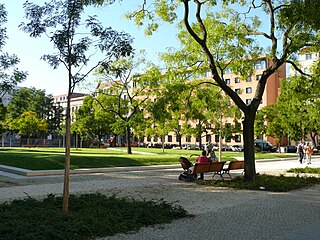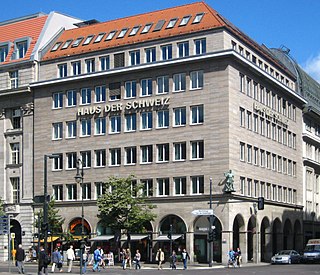Self-guided Sightseeing Tour #2 in Berlin, Germany
Legend
Guided Free Walking Tours
Book free guided walking tours in Berlin.
Guided Sightseeing Tours
Book guided sightseeing tours and activities in Berlin.
Tour Facts
9.4 km
226 m
Experience Berlin in Germany in a whole new way with our free self-guided sightseeing tour. This site not only offers you practical information and insider tips, but also a rich variety of activities and sights you shouldn't miss. Whether you love art and culture, want to explore historical sites or simply want to experience the vibrant atmosphere of a lively city - you'll find everything you need for your personal adventure here.
Activities in BerlinIndividual Sights in BerlinSight 1: Fountain of the Peoples' Friendship
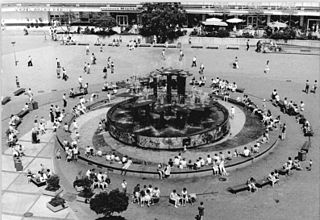
The Fountain of Friendship of Nations is an architectural monument on Alexanderplatz in Berlin's Mitte district. It was built in 1969–1970 by the Walter Womacka collective in the style of socialist modernism. The water of the fountain flows via 17 bowls and 8 outlets from the smaller upper basin to the larger lower basin.
Sight 2: Bahnhof Alexanderplatz
Berlin Alexanderplatz is a German railway station in the Mitte district of Berlin's city centre. It is one of the busiest transport hubs in the Berlin area. The station takes its name from its location on Alexanderplatz, near the Fernsehturm and the World Clock.
Sight 3: Palais Podewils
The Palais Podewils is a baroque aristocratic palace built at the beginning of the 18th century in Berlin's monastery district, which served as a museum and cultural site. After total destruction at the end of the Second World War and subsequent reconstruction, it was called the House of Young Talents (HdjT) from 1959 to 1991. Since 1992, it has borne the name of its most famous resident and is a listed building.
Sight 4: Parochialkirche
The Parochialkirche is a Reformed church in the Klosterviertel neighbourhood of the Mitte borough in Berlin. The church, now a listed building, was built between 1695 and 1703. It is the oldest church in Berlin built as a Protestant place of worship. The church is now used and owned by the congregation of St. Mary's and St. Peter's, the merger of the parishes in the historical city center concluded on 23 September 2005. The congregation forms part of the Evangelical Church Berlin-Brandenburg-Silesian Upper Lusatia, a Protestant regional church body comprising Lutheran, Reformed and united Protestant congregations.
Sight 5: Direktorenhaus Berlin
The Direktorenhaus Berlin is a gallery as well as an art and cultural center in Berlin's Mitte district. It was founded in 2010 by Pascal Johanssen and Katja Kleiss in Berlin as an exhibition venue for applied arts. The center is located on the grounds and building complex of the Alte Münze, the former state mint in the historic center of Berlin. After 20 years of vacancy, the dilapidated building was renovated by the operators of the director's house and thus saved from decay. The Direktorenhaus is also the headquarters of Musicboard Berlin, and well-known artists and musicians such as the Berlin rock band Bonaparte use the rooms of the house as studios and rehearsal rooms.
Sight 6: Ephraim-Palais
The Ephraim Palace is a Rococo-style building in Berlin, Germany, originally constructed in 1766. Despite the destruction of the palace in 1936 by Nazi Germany, the beginning of a reconstruction was possible in 1985, as many elements of the facade had been stored in East Germany. Today, the Ephraim Palace is a cultural-heritage property and houses a museum, mostly dealing with cultural topics.
Sight 7: Hanf Museum Berlin
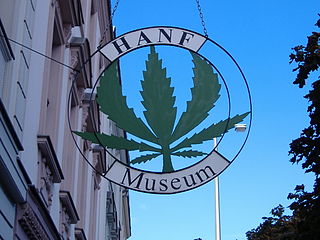
The Hemp Museum was opened in Berlin on 6 December 1994. It is the only museum in Germany focused on the cannabis plant. The museum also actively promotes the protection of children and young people and offers individually tailored tours of the exhibition with care staff. It serves as a meeting place for the organisers of the Hanfparade. The Hanf Museum regularly takes part in the "Long Night of Museums", the Berlin Fairytale Days and the Historale which takes place in the Nikolai Quarter. In 2017, the Hanf Museum took part in the Kirchentag in Berlin as a self-organised event on the topic of the war on drugs with speakers from South American victims, including the Reverend Martin Diaz from El Salvador.
Sight 8: St. Nicholas Church
The St. Nikolai-Kirche, is the oldest church in Berlin, the capital of Germany. The church is located in the eastern part of central Berlin, the borough of Mitte. The area around the church, bounded by Spandauer Straße, Rathausstraße, the River Spree and Mühlendamm, is known as the Nikolaiviertel 'Nicholas quarter', and is an area of restored medieval buildings. The church was built between 1220 and 1230, and is thus, along with the Church of Our Lady at Alexanderplatz not far away, the oldest church in Berlin.
Wikipedia: St. Nicholas Church, Berlin (EN), Heritage Website
Sight 9: Designpanoptikum
Designpanoptikum is a "surrealist museum of industrial objects", featuring a huge collection of technological objects, gathered and arranged by Vlad Korneev in Berlin, Germany. The museum is located in Poststraße 7, 10178 Berlin in the historical center of Berlin-Mitte, the Nikolaiviertel and very close to the Nikolaikirche.
Sight 10: Nikolaiviertel
The Nikolaiviertel is an old quarter of the German capital of Berlin, founded c. 1200. Together with nearby Cölln, they jointly make up Alt-Berlin, the reconstructed historical heart of the city. Located in the Mitte locality, it is five minutes away from Alexanderplatz.
Sight 11: Neptunbrunnen
The Neptune Fountain in Berlin was built in 1891 and was designed by Reinhold Begas. The Roman god Neptune is in the center. The four women around him represent the four main rivers of Prussia at the time the fountain was constructed: the Elbe, Rhine, Vistula, and Oder. The Vistula is now entirely in Poland, while the Oder forms the border between Germany and Poland.
Sight 12: Saint Mary's Church
St. Mary's Church, known in German as the Marienkirche or St.-Marien-Kirche, is a church in Berlin, Germany. It is located on Karl-Liebknecht-Straße in central Berlin, near Alexanderplatz. The exact age of the original church site and structure is not precisely known, but it was mentioned as the site of the alleged theft by Jews of the wafers in an act of Host Desecration in 1243. As a result of these charges, a number of Jews were burnt at the stake at a place later called Judenberg. It is also mentioned in German chronicles in 1292. It is presumed to date from earlier in the 13th century.
Wikipedia: St. Mary's Church, Berlin (EN), Website, Heritage Website
Sight 13: Lutherdenkmal
The Luther monument was a multi-part monument that honored the reformer Martin Luther, designed by the sculptors Paul Otto and Robert Toberentz. The complex was inaugurated in 1895 on the Neuer Markt in the Marienviertel of Old Berlin, in today's Mitte district. The figure of Martin Luther, which remained after the war, has stood since 1989 as a single figure on the north side of St. Mary's Church, very close to its original location on a pedestal made of polished granite.
Sight 14: Berlin Dungeon
Berlin Dungeon is a tourist attraction from a chain including the London Dungeon and Hamburg Dungeon. It provides a journey through Berlin's dark history in an actor led, interactive experience. There are both German and English shows and the actors speak German and English.
Sight 15: Heilig-Geist-Kapelle

The Holy Spirit Hospital (Berlin) (Heilig-Geist-Spital in German) was one of the earliest hospitals in Berlin, established in 1250. It was located on the western side of Spandauer Straße.
Wikipedia: Holy Spirit Hospital (Berlin) (EN), Heritage Website
Sight 16: DDR-Museum
The DDR Museum is a museum in the centre of Berlin. The museum is located in the former governmental district of East Germany, right on the river Spree, opposite the Berlin Cathedral. The museum is the 11th most visited museum in Berlin.
Sight 17: Marx-Engels Forum
Marx-Engels-Forum is a public park in the central Mitte district of Berlin, the capital of Germany. It is named for Karl Marx and Friedrich Engels, authors of The Communist Manifesto of 1848 and regarded as two of the most influential people in the socialist movement. The park was created by the authorities of the former German Democratic Republic (GDR) in 1986.
Sight 18: Neuer Marstall
The Neuer Marstall is a listed historic building in Berlin, Germany located on the Schloßplatz and the Spree River. Completed in 1901 and facing the former Royal Palace, the neo-Baroque "New Stables" once sheltered the Royal equerry, horses and carriages of Imperial Germany. The complex also included three enclosed courtyards, a riding school, and the Knights College.
Sight 19: Humboldt Forum
The Humboldt Forum is a museum dedicated to human history, art and culture, located in the Berlin Palace on the Museum Island in the historic centre of Berlin. It is named in honour of the Prussian scholars Wilhelm and Alexander von Humboldt. Considered the "German equivalent" of the British Museum, the Humboldt Forum houses the non-European collections of the Berlin State Museums, temporary exhibitions and public events. Due to the COVID-19 pandemic, it opened digitally on 16 December 2020 and became accessible to the general public on 20 July 2021.
Wikipedia: Humboldt Forum (EN), Url, Website, Wheelchair Website
Sight 20: Lustgarten
The Lustgarten is a park in Museum Island in central Berlin at the foreground of the Altes Museum. It is next to the Berliner Dom and near the reconstructed Berliner Stadtschloss of which it was originally a part. At various times in its history, the park has been used as a parade ground, a place for mass rallies and a public park.
Sight 21: Museum Island
The Museum Island is a museum complex on the northern part of Spree Island in the historic heart of Berlin, Germany. It is one of the capital's most visited sights and one of the most important museum sites in Europe. Originally built from 1830 to 1930, initially by order of the Prussian Kings, according to plans by five architects, the Museum Island was designated a UNESCO World Heritage Site in 1999 because of its testimony to the architectural and cultural development of museums in the 19th and 20th centuries. It consists of the Altes Museum, the Neues Museum, the Alte Nationalgalerie, the Bode-Museum and the Pergamonmuseum. As the Museum Island designation includes all of Spree Island north of the Karl Liebknecht Boulevard, the historic Berlin Cathedral is also located there, next to the open Lustgarten park. To the south of Liebknecht Boulevard, the reconstructed Berlin Palace houses the Humboldt Forum museum and opened in 2020. Also adjacent, across the west branch of the Spree is the German Historical Museum. Since German reunification, the Museum Island has been rebuilt and extended according to a master plan. In 2019, a new visitor center and art gallery, the James Simon Gallery, was opened within the Museum Island heritage site.
Sight 22: Der Jüngling wird von Athena in neuen Kampf geführt
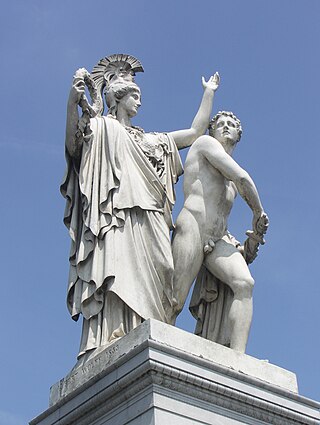
Athena Leads the Young Warrior into the Fight is an 1853 sculpture by Albert Wolff, installed on Schlossbrücke in Berlin, Germany.
Wikipedia: Athena Leads the Young Warrior into the Fight (EN)
Sight 23: German Historical Museum
The German Historical Museum, known by the acronym DHM, is a museum in Berlin, Germany devoted to German history. It describes itself as a place of "enlightenment and understanding of the shared history of Germans and Europeans". It is often viewed as one of the most important museums in Berlin and is one of the most frequented. The museum is located in the 17th-century Zeughaus (armoury) on the Unter den Linden, just across the Spree from Museum Island. The museum's attached Exhibition Hall was designed by I. M. Pei in the late 20th century. The Zeughaus is closed for renovation, while the Exhibition Hall remains open.
Sight 24: PalaisPopulaire
On September 27, 2018, Deutsche Bank opened the PalaisPopulaire as an international forum for art and culture on the boulevard Unter den Linden 5 in the historic Prinzessinnenpalais in the historic center of Berlin. The result is 750 square meters of exhibition space for contemporary art and a permanent location for presentations from the Deutsche Bank Collection.
Sight 25: Christian Beuth
A bronze statue of Christian Peter Wilhelm Beuth by August Kiss is installed at Schinkelplatz in Berlin, Germany.
Sight 26: Bärenbrunnen
The Bärenbrunnen is a fountain that depicts the Berlin heraldic animal, a brown bear, as a family. The fountain is located in Berlin's Mitte district at Werderscher Markt in front of the Friedrichswerder Church.
Sight 27: Friedrichswerdersche Kirche
Friedrichswerder Church was the first Neo-Gothic church built in Berlin, Germany. It was designed by an architect better known for his Neoclassical architecture, Karl Friedrich Schinkel, and was built under his direction from 1824 to 1831.
Sight 28: Prinzessinnenpalais
The Prinzessinnenpalais is a former Royal Prussian residence on Unter den Linden boulevard in the historic centre of Berlin. It was built in 1733 according to plans by Friedrich Wilhelm Diterichs in Rococo style and extended from 1810 to 1811 by Heinrich Gentz in Neoclassical style. Damaged during the Allied bombing in World War II, the Prinzessinnenpalais was rebuilt from 1963 to 1964 by Richard Paulick as part of the Forum Fridericianum. Since 2018, it has been home to an art collection of Deutsche Bank.
Sight 29: Gebhard von Blücher
The Blücher Memorial on Bebelplatz green space in Berlin's Mitte district commemorates the Prussian field marshal and freedom fighter Gebhard Leberecht von Blücher (1742–1819). Created from 1819 to 1826 by Christian Daniel Rauch in neoclassical style, it is a masterpiece of the Berlin school of sculpture. Until 1950 the bronze statue stood at the front of Unter den Linden avenue, with which it formed an urban ensemble, and since 1963 it has stood at the back of the current location.
Sight 30: August von Gneisenau
The Gneisenau Memorial on Bebelplatz green space in Berlin's Mitte district commemorates the Prussian field marshal and freedom fighter August Neidhardt von Gneisenau (1760–1831). Created from 1840 to 1855 by Christian Daniel Rauch in neoclassical style, it is a piece of the Berlin school of sculpture. Until 1950 the bronze statue stood at the front of Unter den Linden avenue, with which it formed an urban ensemble, and since 1963 it has stood at the back of Bebelplatz green space.
Sight 31: Berlin State Opera
The Staatsoper Unter den Linden, also known as the Berlin State Opera, is a listed building on Unter den Linden boulevard in the historic center of Berlin, Germany. The opera house was built by order of Prussian king Frederick the Great from 1741 to 1743 according to plans by Georg Wenzeslaus von Knobelsdorff in the Palladian style. Damaged during the Allied bombing in World War II, the former Royal Prussian Opera House was rebuilt from 1951 to 1955 as part of the Forum Fridericianum square. Nicknamed Lindenoper in Berlin, it is "the world´s oldest state opera" and "the first theater anywhere to be, by itself, a prominent, freestanding monumental building in a city."
Wikipedia: Berlin State Opera (EN), Website, Heritage Website
Sight 32: Alte Bibliothek
The Alte Bibliothek, nicknamed Kommode (Commode), is a listed building on Bebelplatz in the historic centre of Berlin. It was erected by order of Frederick the Great from 1774 to 1780 according to plans by Georg Christian Unger and Georg Friedrich Boumann in Baroque style. Older plans by Joseph Emanuel Fischer von Erlach for St. Michael's Wing of Vienna Hofburg served as a basis for the first freestanding library building of Berlin. Damaged during the Allied bombing in World War II, the former Royal Prussian Library was rebuilt from 1963 to 1969 as part of the Forum Fridericianum. Since then, the Alte Bibliothek has been home to the law faculty of the Humboldt-Universität.
Sight 33: Friedrich Wilhelm Bülow
The Bülow Memorial on Unter den Linden avenue in Berlin's Mitte district commemorates the Prussian army general and freedom fighter Friedrich Wilhelm Bülow von Dennewitz (1755–1816). Created from 1819 to 1822 by Christian Daniel Rauch in neoclassical style, it is a masterpiece of the Berlin school of sculpture.
Sight 34: New Guard House
The Neue Wache is a listed building on Unter den Linden boulevard in the historic centre of Berlin, Germany. Erected from 1816 to 1818 according to plans by Karl Friedrich Schinkel as a guardhouse for the Royal Palace and a memorial to the Liberation Wars, it is considered a major work of Prussian Neoclassical architecture. A Victoria pedimental sculpture by Johann Gottfried Schadow and five General statues by Christian Daniel Rauch, referring to the Warrior statues on Schlossbrücke, also belong to the ensemble. Since 1993, the Neue Wache has been home to the Central Memorial of the Federal Republic of Germany to the Victims of War and Tyranny.
Sight 35: Palais am Festungsgraben
The Palais am Festungsgraben, originally known as the Palais Donner, is a stately building in Berlin’s Mitte subdistrict located behind, and facing, the ensemble of chestnut trees around the Neue Wache, near the eastern terminus of the boulevard Unter den Linden. The name refers to its construction next to a redundant canal, gradually filled in by 1883, which had originally been a moat surrounding the 17th century city wall. Built as a private residence, it later housed a succession of Prussian government offices, and after World War II various cultural institutions in the Soviet sector of Berlin. After administrative authority was transferred to the newly established German Democratic Republic (GDR) in 1949 it hosted a succession of institutions established to further German-Russian contacts. Since German reunification it has accommodated a theater and from 2004 an art gallery.
Sight 36: Singakademie
Berliner Singakademie, consisting of nearly 90 singers, is one of the largest amateur choirs in Berlin. It sees itself in the tradition of Sing-Akademie zu Berlin, founded in 1791 and still existing. The choir sings Renaissance, Baroque, Classical, Romantic, Modern and Contemporary music. The choir was founded in 1963 by Helmut Koch. Since 1989, Achim Zimmermann is its director.
Sight 37: Theodor Mommsen
The statue of Theodor Mommsen by Adolf Brütt is located at Humboldt University of Berlin in Berlin-Mitte, Germany.
Sight 38: Frederick II of Prussia
The equestrian statue of Frederick the Great on Unter den Linden avenue in Berlin's Mitte district commemorates King Frederick II of Prussia. Created from 1839 to 1851 by Christian Daniel Rauch, it is a masterpiece of the Berlin school of sculpture, marking the transition from neoclassicism to realism. The bronze statue shows "The Old Fritz" dressed in military uniform, ermine coat and tricorne hat on horseback above the leading generals, statesmen, artists and scientist of his time. Walled in during World War II, it was disassembled by East Germany in 1950, reassembled in Sanssouci Park in 1963, and returned to its original location in 1980.
Sight 39: Gouverneurshaus
The Governor's House stood from 1721 to 1967 at Königsstraße 19 on the corner of Jüdenstraße in today's Berlin district of Mitte. It was built for the Minister of State Christoph von Katsch by Friedrich Wilhelm Diterichs according to a design influenced by his teacher Martin Heinrich Böhme. It served as the governor's residence from 1732, as the municipal civil court from 1808 and was finally an office and commercial building. A replica built in 1964 with original elements is located at Unter den Linden 11.
Sight 40: Komische Oper Berlin
The Komische Oper Berlin is a German opera company based in Berlin. The company produces operas, operettas and musicals.
Sight 41: Neustädtischer Kirchplatz
The Neustädtische Kirchplatz is a town square in the Mitte district of Berlin, Germany. In its place stood the Dorotheenstadt Church until 1965, after its removal it was a natural open space. It was not until 2000, with the progressive new development in the area, that it was greened and designed, and on 24 May 2011 it was named after the adjacent street and in relation to the history of the square.
Sight 42: Haus der Schweiz
The House of Switzerland is a commercial building in Berlin's Mitte district. The location is Unter den Linden 24 / corner Friedrichstraße 155/156. The building complex is now a listed building.
Share
How likely are you to recommend us?
Disclaimer Please be aware of your surroundings and do not enter private property. We are not liable for any damages that occur during the tours.
GPX-Download For navigation apps and GPS devices you can download the tour as a GPX file.
